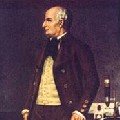Lazzaro Spallanzani was the first to study ultrasound physics.
Lazzaro Spallanzani was born in Scandiano, Italy January 10th 1729. He was educated at the Jesuit college and studied law for three years before getting frustrated and dissatisfied. He then turned his great hunger for knowledge to science. He became a biologist and physiologist, studying body functions and the unknown wonders of the natural world. He also studied philosophy and mathematics. He actually became a priest, although he rarely did much in that capacity. He discovered microbes can move through the air and can be killed by boiling. Louis Pasteur studied and then expanded his work, and got many of his ideas from Spallanzani. He studied many things and had numerous discoveries, including the fact that digestion is a chemical process and not just the grinding of food. He was first to do an artificial insemination of a dog. He wondered why a stone skipped over the water when it was thrown.
The first known foray into ultrasound physics happened in the 1790's. Lazzaro Spallanzani wondered why bats could navigate at night and catch insects as they flew. He blindfolded them and they still maneuvered very well. He then plugged their ears and found that they bumped into obstacles. He concluded that their primary mode of navigation was hearing. He deduced that they must emit ultrasound waves that are inaudible to humans and listen to the echos to determine distance and direction of objects. This idea was received by his fellow scientists with ridicule and skepticism.

The greatest ideas always start out as heresy.
Ultrasound waves are over 20KHZ and cannot be heard by humans.
See What is ultrasound
Spallanzani was proven right just before World War II when Griffen and Galambos, two Harvard students recorded directional ultrasound emitted by bats with a sonic detector.
Ironically, he died of bladder cancer in 1799, a condition that his work would later contribute to help with early detection of the disease.
Thomas Young had the next breakthrough
Back from Lazzaro Spallanzani to history
To Genesis ultrasound machine home page




